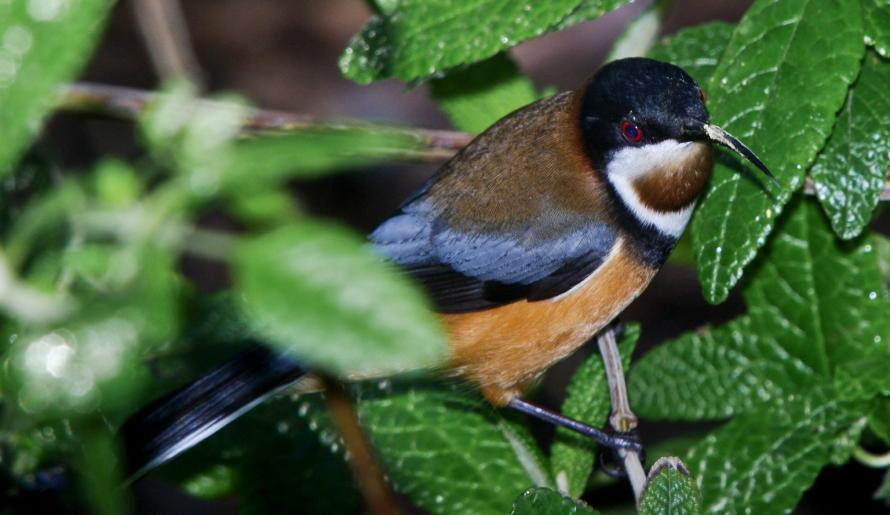

Eastern Spinebill
Acanthorhynchus tenuirostris
| Details | |
|---|---|
| Type | Bird |
| Group | |
| Biology | Breeding season: August to January. Clutch size is two. Nest is a small cup of twigs, grass and bark, combed with hair and spider's web, built in a tree fork, generally between 1-5 m from the ground. Females build the nest and incubate the eggs. Both parents feed the young. Adults feed while perched or hovering. |
| Distinctive Markings | Very long, fine down curved beak. Flies energetically, during which its white outer tail feathers are prominent. |
| Taxonomy | |
|---|---|
| Phylum | Chordata |
| Class | Aves |
| Order | Passeriformes |
| Family | Meliphagidae |
| Genus | Acanthorhynchus |
| Species | tenuirostris |